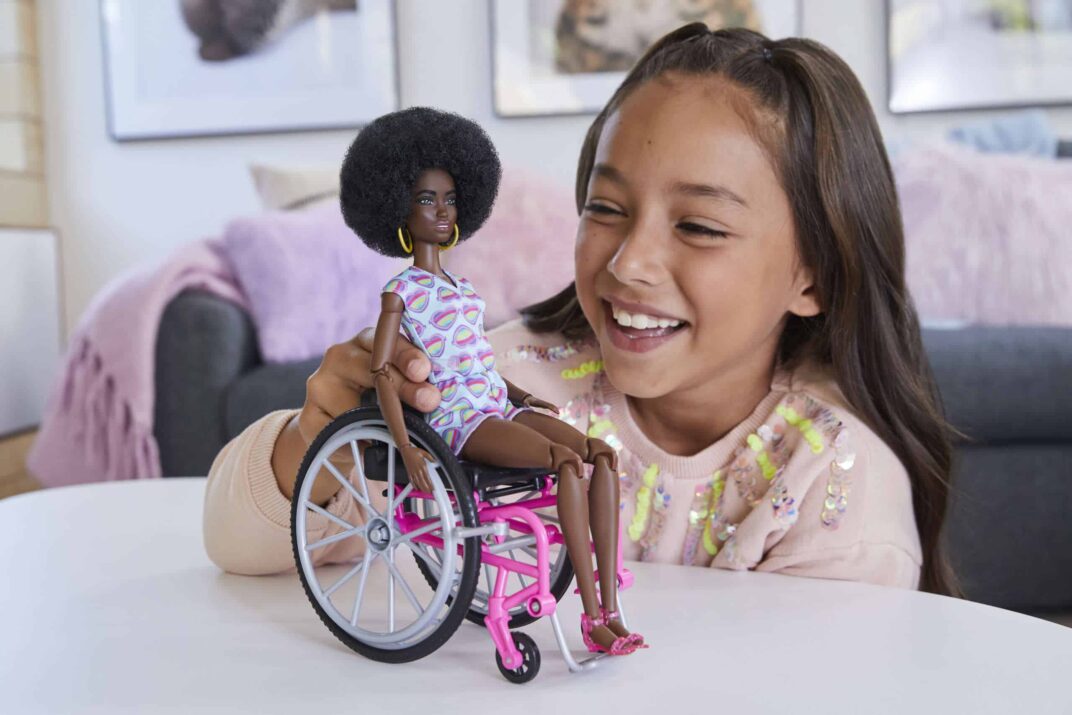
Mattel, Inc. (NASDAQ: MAT) announced that a team of neuroscientists at Cardiff University and Barbie have released the latest findings from a multi-year study exploring the short and long-term developmental impacts of doll play. In the study’s third year, researchers have found that doll play could benefit children with varying social communication styles, including those who display neurodivergent traits commonly associated with autism.
To obtain these new findings, the research team, led by neuroscientist Dr. Sarah Gerson from Cardiff University’s School of Psychology’s Centre for Human Developmental Science, replicated earlier brain-related discoveries from the previous two years and expanded the study’s scope by incorporating a more diverse range of participants*, including children ages 4–8 who display both high and low levels of traits commonly associated with autism.
Collaborating with Dr. Catherine Jones, Director of the Wales Autism Research Centre at Cardiff University, this data further backs the conclusions drawn in the first year, demonstrating that playing with dolls either alone or in a group, can support social processing among children. The results from the third year reinforce this finding across children with and without high levels of autistic traits, albeit through their different approaches to play.
“Our study shows that doll play can encourage social processing in children, regardless of their neurodevelopmental profile. The findings show that all children, even those who display neurodivergent traits commonly associated with autism, may use doll play as a tool for practicing social scenarios and developing social skills, such as empathy,” said lead researcher and neuroscientist Dr. Sarah Gerson.
The team of neuroscientists used state-of-the-art functional, near-infrared spectroscopy equipment to explore brain activation while children played with dolls and on tablets, both by themselves and with another person, replicating conditions from Year 1.
While observing children, researchers saw increased brain activity in the posterior superior temporal sulcus (pSTS) region when playing with dolls, for both play with a social partner and during solo doll play, but less so during solo tablet play. The pSTS region is heavily involved in and active during social and emotional processing. The findings showed that doll play activates brain regions associated with social information processing such as empathy, indicating that doll play may enable children to rehearse, use and perform these skills even when playing independently. Interestingly, this effect in the brain was similar between children displaying fewer and greater traits commonly associated with autism.
The study’s results suggest that doll play could support social processing, regardless of a child’s neurodevelopmental profile, but through different pathways. For children displaying fewer autistic traits, talking about others’ mental states related to pSTS activity (i.e., language about others’ thoughts and emotions when playing alone with dolls). In contrast, for those displaying more autistic traits, talking with others during doll play was related to pSTS activity, even when playing by themselves (i.e., general social engagement with researchers/experimenters rather than a specific type of talking about mental states).
The Year 3 findings from Cardiff University indicate that children, regardless of their neurodevelopmental profile, can play with and potentially benefit from play with dolls in terms of their social development. Other research has shown that social processing and empathy skills are important determinants in children’s future emotional, academic, and social success.
Dr. Catherine Jones said: “The study reinforces how it is important that that we acknowledge and value neurodiversity. This means recognising and valuing the diverse ways in which children’s brains work and approaching social development in a way that is inclusive and accommodating for all children, regardless of their neurodivergence. By embracing all ways that children choose to play, we can create a more inclusive and supportive environment for their development.”
Since the landmark publication of Piaget’s theory of cognitive development, the effects of play have been thought to be positive for kids’ social skills and creativity, but this has never been scientifically evidenced at the brain level. This multi-year long-term study commissioned by Barbie is the first time that key Piaget theories on play have been scientifically evidenced via brain imaging and the first to use neuroimaging evidence with natural doll play, meaning there was no prescribed storyline to show how the brain is activated during doll play.
“We are proud to know that when children, regardless of their neurodevelopmental profile, play with Barbie, their playtime may benefit their development,” said Michael Swaisland, Head EMEA of Insight and Analytics, Mattel. “As Barbie continues to inspire the limitless potential in every child, we are delighted to know, through neuroscience, that playing with Barbie may encourage the development of social skills such as empathy in children, including those who display neurodivergent traits commonly associated with autism. We look forward to uncovering even more benefits of doll play through our long-term partnership with Cardiff University as we look to shine a light on the benefits the play pattern has towards development, that parents might not have been aware of.”
The results of this third year of research, titled “Embracing Neurodiversity in Doll Play: Investigating Neural and Language Correlates of Doll Play in a Neurodiverse Sample,” were peer-reviewed and published in the European Journal of Neuroscience in September 2023 by Dr. Sarah Gerson and colleagues at Cardiff University’s Centre for Human Developmental Science, UK, as well as colleagues at King’s College London.
Parents and caregivers can visit barbie.com/benefits to learn more about the research and access resources.
* The study was commissioned by Barbie and was conducted with 57 children (27 boys and 22 girls) aged 4 to 8 years with varying levels of autistic traits. Traits were measured using the Autism Spectrum Quotient-Children’s Version (AQ-Child, Aueyung, et al., 2008)
